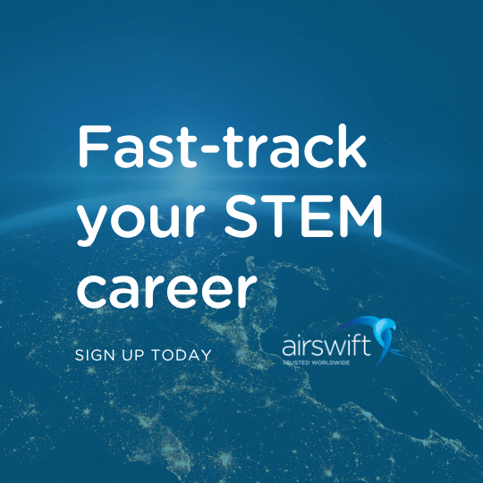
By
Leanna Seah
December 19, 2023
Updated
September 16, 2024
 In this episode, AI and intelligent automation specialist Wayne Butterfield shared his thoughts on the elaborate dance between human ingenuity and the relentless advances of technology.
In this episode, AI and intelligent automation specialist Wayne Butterfield shared his thoughts on the elaborate dance between human ingenuity and the relentless advances of technology.
His insights into the journey of AI and automation since 2010 unravel a compelling narrative for today's rapidly evolving workplace. Wayne's exploration begins with a fundamental truth: the slow adoption of automation is not a technological shortfall but a testament to the intricate nature of human processes. He reminds us that the human brain, in all its complexity, continues to outperform the most advanced AI in problem-solving capabilities.
This revelation is crucial, as it frames the challenge of automating tasks that are inherently human-centric – a task akin to capturing lightning in a bottle.
Listen to the full episode below:
A paradigm shift in the way we work
At the heart of this transformation is a call for a radical rethinking of how work is structured.
The future demands a shift from traditional, human-centric processes to those optimised for technological efficiency. Imagine the realm of auditing, where the transfer of data to an Excel sheet for visual analysis becomes obsolete in a technology-driven landscape. This scenario illustrates the need to strip away redundant steps tailored for human interaction, focusing instead on the essence of efficiency in the age of automation.
Balancing the human element in the era of automation
In the rapidly evolving landscape of automation and AI, a critical dialogue emerges about the balance of human interaction in technology-driven processes. This conversation recognises a significant paradigm shift: many back-office functions, traditionally dependent on human effort, are now being adeptly managed by automated systems.
Wayne offers a compelling perspective on this transformation. He notes, "70 to 80% of all work doesn’t need a human touch because it doesn’t actually touch an end customer." This observation underscores the reality that many organisational tasks can be efficiently automated, reserving human talent for areas where they add substantial value.
Illustrating this shift, Wayne shares his experience with the insurance industry's processes, where he finds the forced inclusion of human elements in ostensibly automated transactions frustrating. This sentiment reflects a broader trend - inserting human interaction where it does not enhance value can lead to inefficiencies and customer dissatisfaction.
The evolving workplace narrative isn't about the elimination of human roles but their strategic deployment. The goal is to blend human skills and automated processes, ensuring meaningful and impactful human involvement, particularly in areas requiring complex decision-making, creativity, or direct customer engagement.
Augmented intelligence and enhancing human potential with AI
The concept of augmented intelligence is revolutionizing our approach to the future of work, painting an optimistic picture where technology complements rather than replaces human capabilities. This vision is embodied in the idea of AI acting as a co-pilot, boosting human productivity and creativity. This shift from replacement to enhancement of human skills with AI marks a significant departure from fears of widespread job displacement.
Wayne describes the role of AI in the future of work not as a competitor to human intelligence but as a powerful ally. "The good news is that technology is not going to take over," he asserts, emphasising the collaborative role of AI.
Wayne's view aligns with the growing trend in AI development towards creating tools that enhance human decision-making and creativity. Far from the dystopian scenarios often portrayed, this approach envisions a workforce where AI is a supportive tool, helping humans achieve greater efficiency and innovation.
The challenge: Integrating AI and automation in the workplace
The journey towards fully integrating AI and automation into the workplace is not without its challenges. Organisations must adapt quickly to the rapid evolution of technology, navigate the complexities of AI regulations and security, and foster a culture that embraces innovation. The successful adoption of AI and automation hinges on agility, adaptability, and forward-thinking strategies.
Wayne highlights the urgency for organisations to stay abreast of technological advancements and to be nimble in their adaptation strategies. The pace of change has accelerated, rendering traditional long-term planning obsolete and necessitating a more dynamic approach to technology adoption and integration.
Moreover, it is crucial for businesses to understand the legal and ethical implications of AI. He underscores the importance of security, particularly in the early stages of generative AI, where the potential for misuse and unintended consequences is high.
In summary, the integration of AI and automation in the workplace is a multifaceted endeavour. It's not merely a shift in technology but a fundamental rethinking of work processes, strategies, and organizational culture.
This narrative extends beyond individual viewpoints, embodying a collective movement towards a future where technology and human ingenuity harmonize, propelling efficiency, innovation, and value. The path forward involves understanding the rapid changes in technology, responsibly navigating regulatory landscapes, and cultivating an agile, secure, and continuously innovative culture.
Key takeaways
- The complexity of human processes limits automation: The slow adoption of automation technologies is not due to their limitations but rather the complexity of human processes and decision-making. He notes, "The human brain, even now, is still greater than any of the commercially available AIs out there."
- Need for rethinking work design for automation: For automation to be more effective, there's a need to redesign work processes with technology in mind.
- Strategic human involvement in automated processes: A significant portion of work, especially back-office tasks, doesn't require human involvement as it doesn't directly impact the end customer. Wayne suggests strategically placing human resources where they add the most value.
- Augmented intelligence, not replacement: Looking to the future, Wayne envisions a world where technology augments human capabilities rather than replacing them. He stresses that the future of AI in automation is about enhancing human intelligence and productivity, not substituting it.
- Rapid adaptation and understanding of AI's impact: The podcast highlights the necessity for organisations to quickly adapt to technological advancements and understand AI's legal and ethical implications. Wayne points out the need for agility and adaptability in adopting and integrating AI and automation technologies in the workplace.
